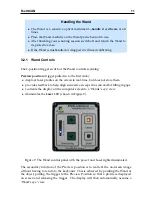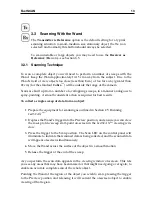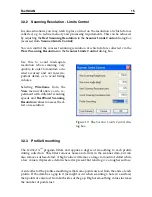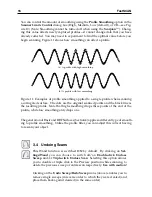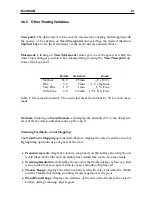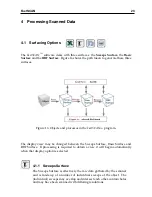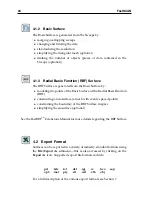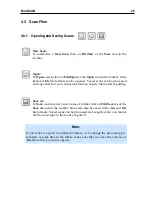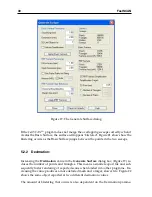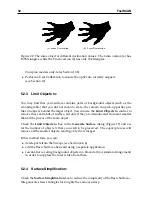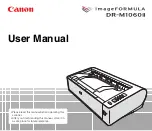
FastSCAN
17
3.5
Using the Secondary Receiver - Rx as Reference
By attaching a secondary receiver (Rx) to the subject it becomes possible
to move and/or reposition the subject while building up the scan, allow-
ing full 360
◦
coverage. This can also be used to compensate for small
movements that may occur in the subject while scanning or to scan large
objects.
3.5.1
Moving the Subject During Scanning
Attach the
Receiver
firmly
to the object you are scanning. From the
Scanner
menu, se-
lect
Receiver is Reference
. Note that the Receiver becomes the origin of the Reference
Coordinate System. It is also important to note that although the object and Trans-
mitter can be moved—for example, held in the hand—they should not be moved in
a rapid or jerky manner.
To achieve the best results, keep the Transmitter as close as practical to the Wand
and Receiver. However, you must keep the Receiver at least 100 mm away from the
Transmitter to avoid signal overload. The subject can be rolled or rotated as required
during scanning to enable full access for the Wand.
It is possible to remove the Receiver if required, allowing you to scan the part of the
object where it was attached. Place the object and the Transmitter near to each other,
remembering that once you remove the Receiver, the object and the Transmitter must
not move. Select
Freeze Receiver
from the
Scanner
menu; the software will then
provide instructions.
3.5.2
Scanning Unstable Objects
A live subject being scanned will often move
involuntarily, for example, small head movements
while scanning a face. This problem can be over-
come by attaching the Receiver to the subject’s
head with a plastic headband
optionally included
with the
FastSCAN
TM
system.
Attach the Receiver firmly to the headband with
the nylon screws provided and adjust the head-
band size to give a firm but comfortable fit, as
shown in Figure 12.
Figure 12:
Using the
Receiver attached to the
headband.









